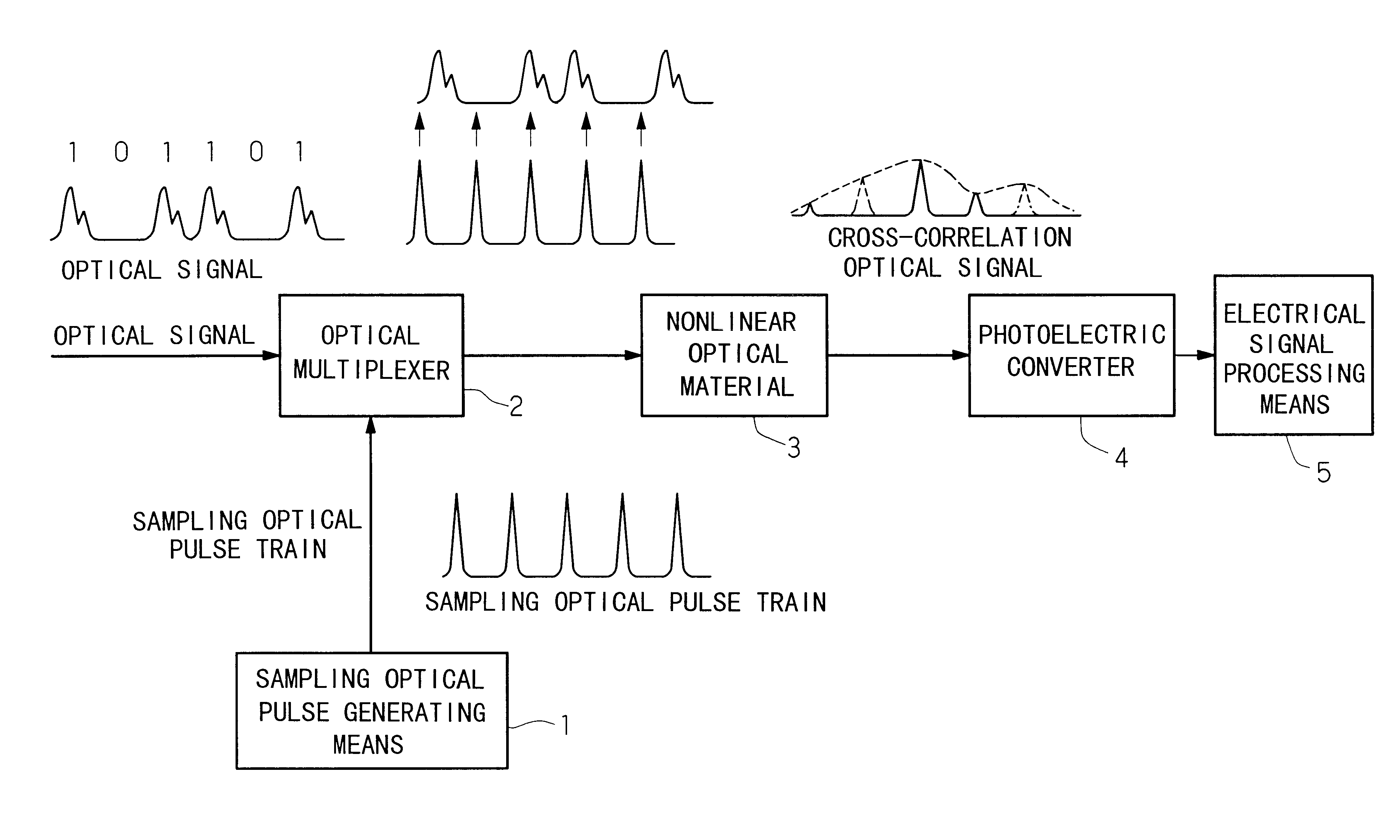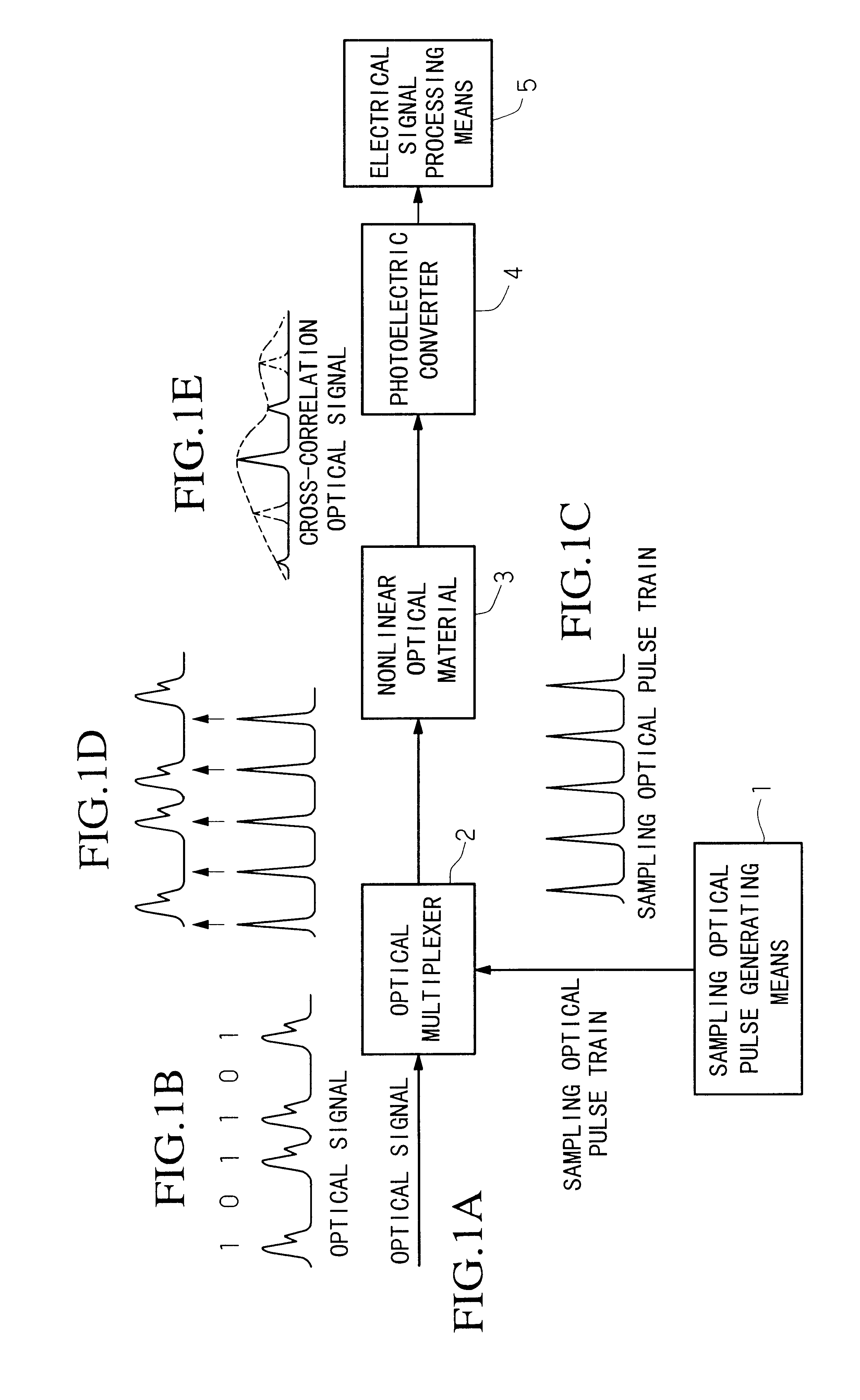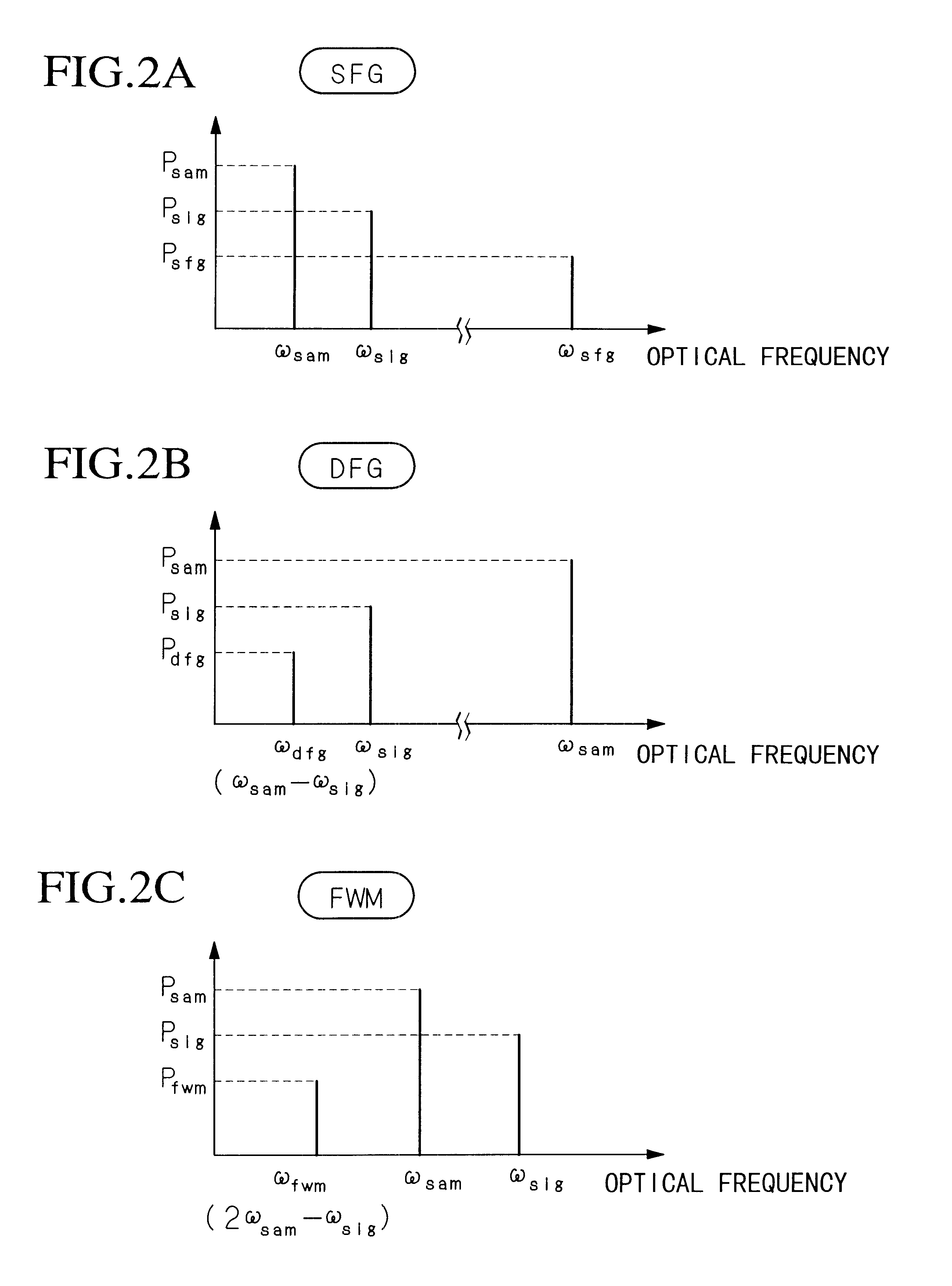System for monitoring quality of optical signals having different bit rates
a bit rate and optical signal technology, applied in the field of optical signal quality monitoring system, can solve the problems of low measuring efficiency, inability to execute error-rate detection using a single circuit based on the conventional technique, and the possible bit rate of optical signals is limited to approximately 40 gbit/s
- Summary
- Abstract
- Description
- Claims
- Application Information
AI Technical Summary
Problems solved by technology
Method used
Image
Examples
first embodiment
FIG. 8 shows the system for monitoring the quality of an optical signal, according to the present invention.
In the figure, an optical signal having bit rate N.multidot.f.sub.0 (bit / s) which is N (natural number: 1, 2, . . . ) times as much as basic clock frequency f.sub.0 (Hz) is input from a transmission path. A portion of this optical signal is separated by optical coupler 51-1. Preferably, the branch ratio of the monitor port (connected with the monitoring side) of the coupler to the other port connected with the transmission path is set as small as possible so as to prevent the transmission characteristics from degrading due to the power loss caused by the branch operation. The optical signal output from the monitor port of the optical coupler 51-1 is further separated into two portions by optical coupler 51-2.
One portion of the optical signal separated by optical coupler 51-2 is input into timing-clock generator 11. In the generator, basic clock frequency f.sub.0 (Hz) is extrac...
second embodiment
FIG. 11 shows the second embodiment of the system for monitoring the quality of an optical signal, according to the present invention.
The feature of the present embodiment is to use timing-clock generator 16 in place of timing-clock generator 11. The timing-clock generator 16 uses a network-synchronized clock signal having clock frequency f.sub.0 / m (f.sub.0 is the basic clock frequency, and m=1, 2, . . . ), and generates a timing-clock signal of f.sub.0 / n.sub.1 -.DELTA.f (Hz) or f.sub.0 / n.sub.1 +.DELTA.f (Hz) (n.sub.1 =1, 2, . . . ). Here, the offset frequency .DELTA.f can be determined based on the above equation (11). The other structural elements are the same as those of the first embodiment.
The internal structure of the timing-clock generator 16 may comprise, as shown in FIG. 9B, basic bit-rate timing generator 17 for generating the clock frequency f.sub.0 / n.sub.1 using a network-synchronized clock signal having bit rate f.sub.0 / m.
Instead of the timing-clock generator 11 (s...
third embodiment
FIG. 12 shows the third embodiment of the system for monitoring the quality of an optical signal, according to the present invention.
The nonlinear optical effect used in the present invention generally depends on polarization, and the power of the generated cross-correlation optical signal is changed in accordance with the polarization states of the input signals. The polarization dependency can be excluded in the present embodiment.
Therefore, polarization beam splitter 21 having two input ports and two output ports is used in place of optical coupler 2 in the first embodiment. In this case, the optical signal and the sampling optical pulse train are respectively input into these input ports, and a series of nonlinear optical material 3-1, wavelength filter 32-1, and photoelectric converter 4-1 is connected to the first output port, while a series of nonlinear optical material 3-2, wavelength filter 32-2, and photoelectric converter 4-2 is connected to the second output port. The cr...
PUM
| Property | Measurement | Unit |
|---|---|---|
| clock frequency | aaaaa | aaaaa |
| frequency | aaaaa | aaaaa |
| pulse repetition frequency | aaaaa | aaaaa |
Abstract
Description
Claims
Application Information
 Login to View More
Login to View More - R&D
- Intellectual Property
- Life Sciences
- Materials
- Tech Scout
- Unparalleled Data Quality
- Higher Quality Content
- 60% Fewer Hallucinations
Browse by: Latest US Patents, China's latest patents, Technical Efficacy Thesaurus, Application Domain, Technology Topic, Popular Technical Reports.
© 2025 PatSnap. All rights reserved.Legal|Privacy policy|Modern Slavery Act Transparency Statement|Sitemap|About US| Contact US: help@patsnap.com



